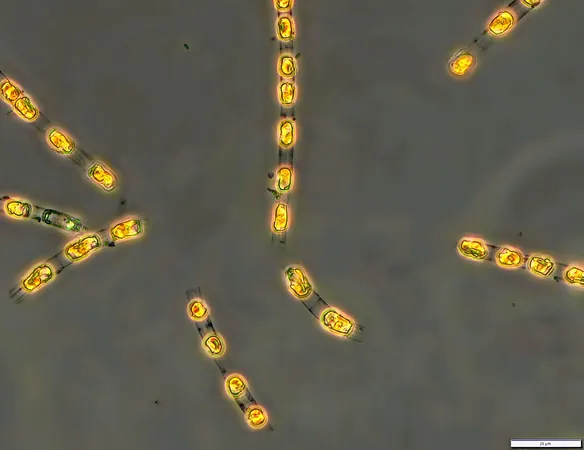
Groundbreaking Research Uncovers Potential of Silmitasertib in Treating Huntington's Disease
2025-04-01
Author: Li
Groundbreaking Research Uncovers Potential of Silmitasertib in Treating Huntington's Disease
Recent preclinical investigations have unveiled promising therapeutic potential for silmitasertib (CX4945), an FDA-designated orphan drug primarily used in cancer treatment. This innovative approach may provide significant benefits for those suffering from Huntington disease (HD) by diminishing the toxic aggregation of mutant huntingtin (mHTT) proteins and enhancing motor function, according to findings presented at the 2025 International Conference on Alzheimer’s and Parkinson’s Disease (AD/PD) in Vienna.
The study involved the administration of CX4945 through gavage in both wild-type and zQ175 HD mouse models. The results were striking: mice treated with CX4945 exhibited markedly improved motor function compared to their untreated counterparts. Additionally, it was observed that CX4945 effectively reduced mHTT aggregation and associated neurological pathology within the striatum, a brain region critical to motor control. Notably, the treatment also stimulated astrocytes (supportive brain cells) to uptake mHTT aggregates more efficiently, alongside modifying the distribution and function of different astrocyte subtypes.
Understanding Huntington Disease and CK2 Inhibition
Huntington disease, characterized by a CAG repeat expansion in the huntingtin gene, leads to devastating neurodegenerative effects manifesting as cognitive decline, motor dysfunction, and psychiatric disorders. The pathological hallmark of HD includes the targeted degeneration of striatal neurons paired with significant changes in astrocytic function, underscoring the need for therapeutic interventions that address both neuronal and glial components.
The implications of CK2 inhibition extend beyond Huntington’s disease and could pave the way for new treatments for other neurodegenerative disorders. Yet, researchers emphasize that further investigation is imperative to fully understand the effectiveness of CK2 inhibition in HD therapy.
Future Research Directions
Future studies may focus on employing genetic methodologies to dissect the specific effects of different CK2 isoforms in vivo, evaluating CK2 depletion's impact across various HD mouse models, and developing more selective inhibitors targeting CK2α and CK2α’—all critical to unraveling their role in mitigating mHTT toxicity.
Emerging research indicates that CK2α’ plays a pivotal role in HD pathology by regulating critical processes including protein homeostasis, inflammation, synaptic gene expression, and motor function. Although current evidence suggests that pharmacological inhibition of CK2 can alter huntingtin phosphorylation, it remains uncertain if the various CK2 catalytic subunits contribute differently to the disease mechanism. Findings have prompted experts to consider the potential of specifically targeting CK2α’ for more efficacious outcomes, potentially offering substantial long-term improvements for managing multiple symptoms associated with Huntington's disease.
Conclusion and Hope for the Future
As the field progresses, the spotlight remains on the potential of silmitasertib and CK2 inhibition, igniting hope for innovative therapies that could transform the lives of those battling Huntington’s disease.
Stay tuned for more updates on breakthroughs in neurodegenerative disease research!




 Brasil (PT)
Brasil (PT)
 Canada (EN)
Canada (EN)
 Chile (ES)
Chile (ES)
 Česko (CS)
Česko (CS)
 대한민국 (KO)
대한민국 (KO)
 España (ES)
España (ES)
 France (FR)
France (FR)
 Hong Kong (EN)
Hong Kong (EN)
 Italia (IT)
Italia (IT)
 日本 (JA)
日本 (JA)
 Magyarország (HU)
Magyarország (HU)
 Norge (NO)
Norge (NO)
 Polska (PL)
Polska (PL)
 Schweiz (DE)
Schweiz (DE)
 Singapore (EN)
Singapore (EN)
 Sverige (SV)
Sverige (SV)
 Suomi (FI)
Suomi (FI)
 Türkiye (TR)
Türkiye (TR)
 الإمارات العربية المتحدة (AR)
الإمارات العربية المتحدة (AR)